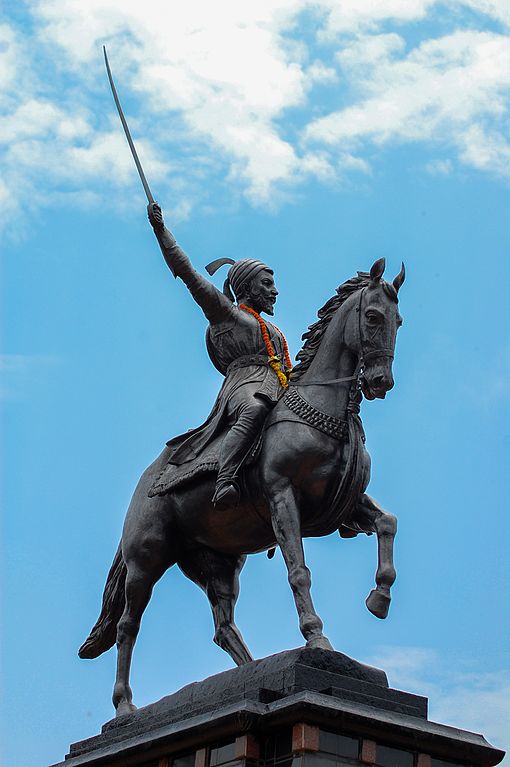
Chhatrapati Shivaji Maharaj will soon return to Agra after a gap of 354 years. Unlike his last visit when he had to suffer indignity as he was put in house arrest, this time the triumphal Maratha warrior-king will get a hero’s welcome. And he will have an entire museum to himself–outside the eastern gate of the magnificent Taj Mahal.
No visitor to the “ode to eternal love” between Mughal king Shahjehan and his wife Mumtaz Mahal can miss the memorial to the Maratha monarch who was a thorn in the side of Mughal emperor Aurangzeb.
While historians hunt for Shivaji’s links to Agra to justify the upcoming museum in his memory near the ancient river Yamuna, let us scour history and find when and how the Maratha-warrior king came to Agra. Well, Taj Mahal was there but he certainly didn’t come to see the Taj.

It was in the unbearably hot northern Indian Summer of 1666 that Shivaji came to Aurangzeb’s court in Agra. The celebrations of the emperor’s 50th birthday were underway and proper attention was not paid to Shivaji. To add insult to injury, when Shivaji came face-to-face with Aurangzeb, the only time they came so close, he was not acknowledged or was asked to stand with the low-ranked nobles of the empire. Shivaji was a recent foe-turned-noble and expected better reception.
There are different versions on how Shivaji reacted, but all agree that he protested the slight. Bamber Gascoigne, in his book ‘The Great Mughals” write: “Suddenly, as the proceedings dragged on, he (Shivaji) burst out in noisy protest which shattered the reverential calm of the diwan-i-am, and then he left the hall without receiving the elephant, the robe and the jewels which Aurangzeb had been intending to present to him at the end of the durbar.” In the hindsight, we can presume that the man who had to surrender over two dozen forts to the Mughals as part of treaty of peace, Shivaji was not in Agra to receive an elephant as a gift. While it stunned other nobles and many courtiers, a furious Aurangzeb didn’t tolerate such violations of protocol and ordered to put Shivaji under house arrest. In which house? We are not sure.
During his three months of house arrest Shivaji had befriended some guards. Shivaji, along with his nine-year-old son, Sambhaji, planed an escape. A story, some call it fanciful, has it that they slipped away in large baskets which contained alms for the poor Brahmins in the city. Father and son masqueraded as wandering ascetics while they undertook an arduous journey back home and till they were out of Mughal-held territory. Once out of the clutches of the Mughals and into his familiar landscape dotted with mountainous forts and deep valleys, Shivaji broke the treaty with the Mughals. As the Mughal control loosened, in 1670 he began taking back the forts he had ceded in 1665. He prepared for his grand coronation ceremony.
But before we move on to Shivaji’s grand coronation in 1674 where he crowned himself Chhatrapati or monarch, let us see what had happened preceding to his arrival in Aurangzeb’s court in Agra.
A master of guerilla warfare and spectacular raids, Shivaji, commanding 10,000 cavalry and 50,000 infantry in the 1660s, had hit many Mughal targets. In 1663, with just a few dozen men, he had invaded the Pune home of Mughal viceroy in Deccan and Aurangzeb’s maternal uncle Shaista Khan (Mumtaz Mahal’s brother). Having picked a hole in the wall of the palace, Shivaji and his band of followers entered Shaista Khan’s harem. Though Shaista escaped injured, many of his attendants were killed. This infuriated Aurangzeb.
Subsequently, Shivaji with a much larger army in 1664 attacked and looted Surat. Now Aurangzeb, restless at the ravages Shivaji had inflicted on his kingdom, responded by sending his powerful general Jai Singh to deal with Shivaji. Jai Singh, using Shivaji’s own game at diplomacy and guerrilla tactics, laid seige to many of his key forts. Shivaji agreed to become a vassal of the Mughal. Forcing Shivaji to come to a treaty was itself a big victory for Jai Singh, but Aurangzeb wanted Shivaji to personally pay his respects and wanted him in Agra. Shivaji resisted but Jai Singh persuaded him, promising safe conduct at the court. And so Shivaji reached Aurangzeb’s court in 1666.
In 1674 while Aurangzeb was engaged in pursuit of the Afridi tribe in the West, Shivaji, master of a huge territory, declared himself monarch of an independent Maratha kingdom. It stretched parts of the Western Ghats to the Konkan region. In six years that he ruled as a king he was hailed as junta raja, subject of innumerable panegyric poetry, plays, folk songs and ballads.
Before he died in 1680, Shivaji had established a just administration. A contemporary Muslim historian wrote that Shivaji “abstained from disgraceful acts, and was careful to maintain the honour of the women and children of Mohammedans when they fell into his hands.”
It is one of the ironies of history that one of Aurangzeb’s son, Akbar, rebelled against his father and allied with Sambhaji, son of Aurangzeb’s archenemy Shivaji. And which is why Aurangzeb had to personally come to fight the combined opposition.
Unlike the likes of Yogi Adityanath who would like us to believe that Aurangzeb-Shivaji conflict was religious, it was essentially a power struggle. Shivaji allied with Muslim states like Bijapur and Golconda, had recruited Muslims in his army. Some of his top commanders were Muslims and Qazis (Muslim judges) were on his payroll. Had it been a Hindu-Muslim conflict, why did Aurangzeb send Hindu general, Jai Singh, to besiege Shivaji? Nevertheless, some of Aurangzeb’s policies angered the Hindus. Jawaharlal Nehru, in his Discovery of India perceptively observed: The Mughal rulers were strong so long as they put themselves in line with the genius of the nation and tried to work for a common nationality and a synthesis of the various elements in the country. When Aurangzeb began to oppose this movement and suppress it and to function more as a Muslim than an Indian ruler, the Mughal Empire began to break up.”
If at all Shivaji deserves a museum in Agra, build a different one. As for why the Mughals deserve a museum there, wait for another article. Watch out this space.
Mohammed Wajihuddin, a senior journalist, is associated with The Times of India, Mumbai. This piece has been picked up from his blog.

